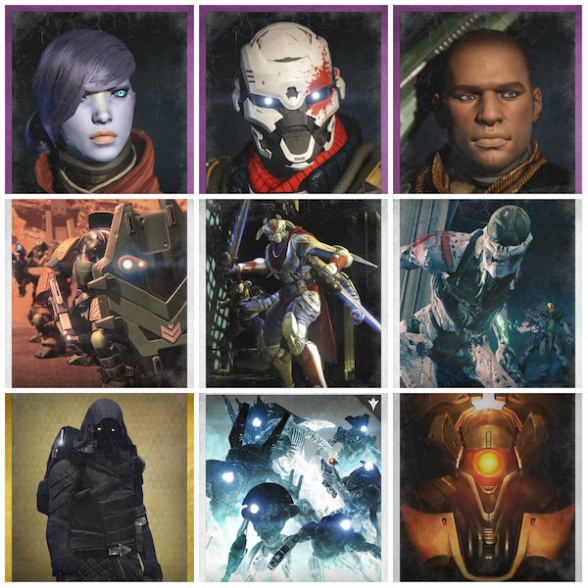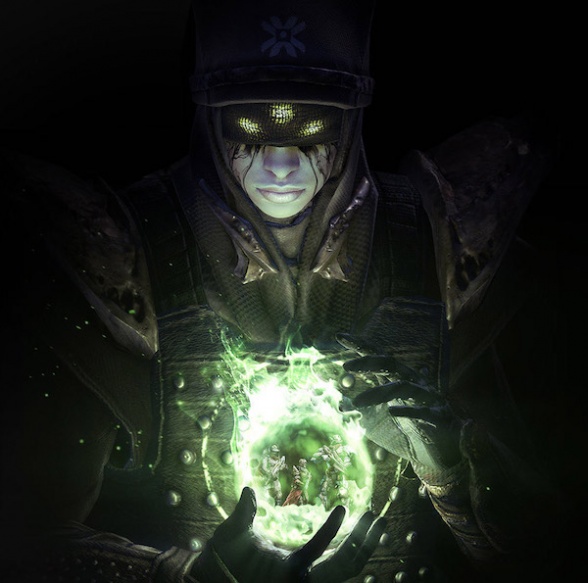With its fifth anniversary in early September, it seems like a good idea to delve into the video game franchise known as Destiny by Bungie and Activision. The lore may have moved on, whether due to the elements not being very important anymore, or due to internal confusion, but that does not mean that said elements can’t be explored anyway.
It is widely stated that Destiny as a whole has a wealth of untapped potential. From genre blends unseen to lore fragments only ever put together in text logs (or less) to much, much more, so much story is possible outside of what has been explicitly shown. Unlike the Dark Souls games, this kind of plotting does not appear to have been entirely intended.
From space westerns to horror stories to a futuristic tale of knights versus monsters, Destiny brings a lot of different genres into its science fantasy trappings. So many possibilities fit into different genres, from those mention to a post-apocalyptic tale to time travel to even, as shown through some elements of the Books of Sorrow, a bizarre, extremely violent family sitcom. Who knows? Maybe even a romantic comedy could come out of Destiny’s expansive lore. Many of these elements are explained more or less in full through the out-of-game online Grimoire, so rather than go into those stories (as intriguing as they may be), it seems better to look at those that aren’t given nearly as much focus.
The series leaves a lot on the table, but doesn’t explain much of it, especially in the original game. However, that’s where we come in to bring up some ideas for consideration, and as always, even if there have been very brief stories for more recent expansions, We Want Comics.
Unexplored Variety

The sheer variety of the sapient species in Destiny is itself a major element that could be explored in depth, both against and allied with humanity.
First, there are the various species not directly connected to humanity at all, whether enemies or just neutral. On the one hand, we have the Hive, with their dark magic, both in terms of the Taken and their general powers. Their history and culture has been explored in depth through a variety of sources, from the Books of Sorrow to several expansions upon the game itself. Then there are the Elksni, a.k.a. the Fallen, whose tribal, scavenger lifestyle and trappings give rise to post-apocalyptic, Mad Max-like exploration of their fall even if not seen through the tragic lens of their abandonment by the Traveler. The more purely technological ways in which the Cabal use abilities similar to the Light (even ignoring their ability to truly trap said Light itself) in spite of not having a direct line to neither the Light nor the Darkness, on top of their almost-but-not-quite Warhammer 40,000 aesthetic make them into an unusual entity in the setting of Destiny. The Vex are an intriguing conundrum with their frankly ridiculous use of temporal technologies both in conflict and for a kind of time-based reality warping. Even the multi-species “Taken” could be expanded upon through the beginnings of them, their mindset (such as it is), and more, considering at least some of the Taken seem to have a resemblance toward a mind of their own when not directed specifically by a higher Darkness-affiliated being.
On the weirder, non-affiliated notes, Jovians such as Xûr, Agent of the Nine and the Nine themselves could potentially be expanded upon, but their mystery perhaps would make such a concept less than ideal.
Even humanity and those living with them in the Last City could use some expansion, especially when it comes to the non-human species themselves. From the pseudo-elves known as the Awoken (especially those living in the Reef) to the Exo mechanical lifeforms, there could be a sizable amount of further information on the way that those species operate. The Exos in particular have practically no expansion on the way that they function, considering that they don’t have a non-City homeland, and some way to go into how they differ from and are similar to humans, including things like romantic ties or replacement of lost body parts, would be very much appreciated.
Continued belowDark on the Moon

Wide swathes of Eris Morn’s history and that of the doomed fireteam sent to assassinate Crota, Son of Oryx are known through a variety of means, mostly through the various Grimoire entries. However, one element is never shown in full, only alluded to: her years hiding from the Hive in the massive underground fortress known as the Hellmouth.
Of course, given the sheer horrors that can be wrought by the Hive, the reluctance to speak of what happened is completely understandable. However, her evolution from a broken down Hunter to the Guardian self-styled as Crota’s Bane would make for an intriguing horror story.
How much of the Hive’s dark magic did she encounter? How did she find out so much about how their necrotic forces operate? How did she keep using the Light to the degree that she could even after her Ghost was drained? Why is her Light the sickly Hive green, and does it, as corrupted as it is, function in new, different ways than the traditional versions used by various Guardians of solar, void, and arc types? How much of said Hive magic can she actually use herself, given she could make her new three eyes after her old ones were removed through their power?
On another similar note, examination of the Hive through the perspective of Eris Morn would allow for a heightened air of eldritch horror (as she reads Toland the Shattered’s journal and the madness it contained, likely not unlike the works of H.P. Lovecraft) and a deeper understanding of both the Light and the Darkness.
With the approach of the “Shadowkeep” expansion for Destiny 2 in October and its return to both the Moon and Eris Morn herself, this story seems much more relevant than it once was.
A Time of Iron

Before they assembled as the Guardians of the Last City, those risen by the Ghosts of the Traveler were something far less noble: warlords of their own kingdoms. One group came as a rare exception known as the ten Iron Lords: Efrideet, Felwinter, Gheleon, Jolder, Perun, Radegast, Saladin Forge, Silimar, Skorri, and Timur. Though only Efrideet and Saladin Forge remain following the tragic events in the Plaguelands of Earth, their legend spans a very long time.
A great warrior with a flaming axe rising up alongside his fellows to face immortal warlords across the world, accompanied by wolves and squires… sounds a lot like a feudal story, doesn’t it? Well, the Dark Age and the Iron Lords are ripe for that kind of content, from the Iron Lords to their successor Iron Wolves to all that comes between. Mixing the classical tropes of a story of knights (even including things like dragonslaying in the form of the battles with Ahamkara) with the elemental magic and high technology common to Destiny, looking deeply into this lost age could give a lot of fun, interesting content that could simultaneously help to expand upon our knowledge of the fallen members of the Lords themselves.
Grimoire Illustrated

It is no secret that players of Destiny did not appreciate having most of their story relegated to an online database outside of the game they were playing. The nearly text-only entries of the “Grimoire” left a lot to be desired, with extremely interesting stories given in a “tell, don’t show” framework that ignored player interaction and interest. In many ways, stories in the Grimoire were more interesting than those in the gameplay.
As such, why not remake said stories in an illustrated form? The variety, as stated earlier, is nearly endless, from a space western tale of vengeance to a gradual fall from grace (both seen in the tale of the Last Word and the Thorn), to a rise of a god-king from a young girl of an ancient, unseen species and the at times hilarious stories of their antagonistic family (the Books of Sorrow), and much, much more. These stories were once hidden, before being published in a primarily prose book (or several to come), but why not include some more illustration to help visualize what exactly happened?
In terms of writers, one option is a rotating staff, similar to the “Overwatch” comics since 2016, with different writers brought on to deal with different types of stories. If that is not viable, there are three potential authors. Anne Toole has shown a lot of skill with translating video game content to print through her work on “Halo: Lone Wolf,” and could possibly bring that kind of expertise to Destiny. Ram V is very capable of using a large variety of genres in tandem with one another, such as the three-issue “Quake Champions” series, including science fiction and horror stories. James Tynion IV’s work with the terrifying side of even the most wondrous magic, from “Constantine: The Hellblazer” to “Justice League Dark,” makes him an especially good writer for a trip into the Hellmouth.
For artwork, Dave Rapoza, the artist on the official Destiny comics thus far, would be an excellent choice, given his intricate detail on every character and scenario to date. His artistry, both in pencils and colors, could fit to a plethora of Destiny storylines. However, if not him, another option would be Stjepan Šejić, who already has a sizable amount of Destiny-related artwork that he has drawn in his free time, and is very good at use of facial dialogue that would be necessary when dealing with Eris Morn in particular. A third option is Alan Quah, whose artwork on both the “Dark Souls” comics and “Quake Champions” shows a wealth of experience with both eldritch horror and a sword and sorcery dark fantasy setting, a combination that can be geared toward a dark science fantasy by merging the two. Others, such as “Transformers” artists Alex Milne and Nick Roche, could also be very good choices for this science fantasy series.






